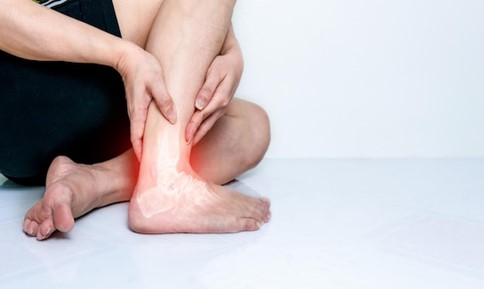A condition characterized by inflammation of the Achilles tendon, the body's largest tendon that connects the calf muscles to the heel bone.
Here's an overview of Achilles tendinitis:
Anatomy and Function
The Achilles tendon enables us to walk, run, and jump by transmitting force from the calf muscles to the heel bone. It is prone to injury due to its role in absorbing significant forces during physical activity.
Causes
Repetitive strain on the tendon from activities such as running or jumping.
Tight calf muscles or inadequate warm-up before exercise.
Sudden increase in duration of physical activity.
Poor footwear or training techniques that strain the tendon.
Symptoms
Discomfort and stiffness along the Achilles tendon, particularly in the morning or following extended periods of rest.
Tenderness or swelling around the tendon, particularly where it attaches to the heel bone.
Mild to severe pain that worsens with activity and improves with rest.
Thickening of the tendon.
Diagnosis
Physical examination to assess pain, swelling, and range of motion. Imaging tests (ultrasound or MRI) to visualize the tendon and determine the extent of damage.
Treatment Options
Conservative (non-surgical)
Rest, avoiding activities that exacerbate symptoms.
- Ice therapy to reduce inflammation.
- Nonsteroidal anti-inflammatory drugs (NSAIDs) to relieve pain and swelling.
- Physical therapy to stretch the tendon and surrounding muscles.
- Orthotic devices to support the heel and reduce strain.
Surgical
Reserved for instances of significant severity when conservative treatments prove ineffective. Options include debridement (removal of damaged tissue) or tendon repair.
Recovery and Prevention:
- Gradual return to physical activity
- Stretching exercises to prevent recurrence.
- Proper footwear and equipment for sports activities.
- Adequate warm-up and cool-down routines before and after exercise.
- Monitoring training intensity and avoiding sudden increases in activity level.
- Achilles tendon rupture, particularly in instances of severe inflammation or degeneration
Achilles tendinitis is a prevalent injury that can limit physical activities and sports participation. Prompt diagnosis, proper treatment, and preventive measures are key to managing and recovering from this condition effectively. Consulting with a healthcare provider is crucial for personalized care and achieving optimal outcomes. With proactive management, individuals can alleviate symptoms, regain mobility, and resume their active lifestyles.



